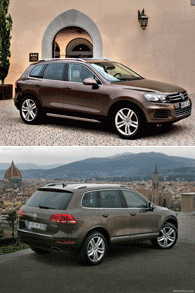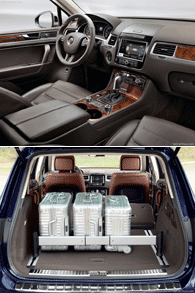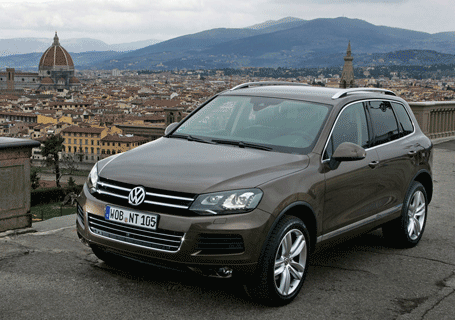
Now, more than ever, Volkswagens’ focus seems to be on volume-maximizing rather than up-market conquests. Hence, it is surprising to find the all-new Volkswagen Touareg to be a comprehensive and compelling update, rather than a mere “touch-up” like the “new” Phaeton.
The outgoing model was well-liked by punters, with more than half a million units finding homes since 2003. We think the key to Touareg’s success has much to do with its underdog status; offering similar performance, space and quality at a significantly reduced price.
Like before, the new Touareg is built from the same set of mechanical architecture as the Porsche Cayenne. And like its posh cousin, the big VW promises superior on-road behaviour, boast in quality and performance, but the biggest news would be a 10 per cent weight reduction over the previous model.
Our car, the 3.6 V6 has shed 208 kg, coupled with a reworked engine and a new 8-speed automatic transmission, a first for SUV, fuel consumption is claimed to be 10.4 per 100 km, that’s 2 litres less than the previous version. That means CO2 emissions has fallen to 248 g/km, making it 48g/km less than before. That said, the Touareg is still not going to be on the shopping list of a tree hugger, though we find the improvements commendable and much welcomed.
The good news doesn’t stop here. Despite still tipping the scales at over two tones, 2,035 kg to be precise, in corners, the Touareg does not feel like Ms Piggy attempting ballet.
The large SUV is able to corner flat and there is little understeer. Feels like a Golf on Manolo Blahniks, where body roll is mostly kept in check. Shouldn’t be so much of a surprise, since this is fundamentally a Porsche, right?
Don’t start thinking that any of this handling finesse is at the expense of ride comfort. Here you find a well resolved ride, thanks to soft damping. Bump absorption is pretty good, though it loses some composure over large disturbances.
All sounds really good.
That’s if you can overlook the dull exterior design, which we feel, is a step backwards from the previous model. The new Touareg carries Volkswagen’s current design language and by any measures, this is not a radical look; it’s neat, conservative and inoffensive. Even with the inclusion of LED daytime running lights, the SUV is giving off vibes of a shy school boy.

The same thought continues in the interior; it looks neat and functional and that’s it. There is a lack of dazzle or any design flare in here. Then, there is a 40mm increase in wheelbase, so there is more space, for the rear seats, but there is no extra pair of seats in the rear, hence limiting the Touareg to be a strict five-seater.
Here, we think the hierarchy of the brands within the Volkswagen Group is at play here. The Touareg can neither out-posh the Porsche nor can it seat seven like the Audi Q7. Hence, the People’s SUV can only impart a genuine sense of luxury to the interior in terms of its proportions, but the design must remain fairly simple at heart.
Still, to criticise the plain styling and the interior which has been thumbed down obviously for business reasons is to miss the point of the Touareg. If you don’t need seven seats, this is quite possibly the best car in the class – good handling, interior space, high-spec interior and most important of all, it is arguably the least pretentious car in the class.
The quiet ones can be charming too, you know.
| Engine | V6, 3,597 cc |
| Transmission | 8-speed automatic |
| Wheels Driven | four-wheel drive |
| Max. Power | 280 bhp @ 6,200 rpm |
| Max. Torque | 360 Nm @ 3,200 rpm |
| 0-100 km/h | 7.8 seconds |
| Top speed | 228 km/h |
| Fuel Economy | 10.4 L/100 km |
| CO2 Emissions | 248 g/km |
| Dimensions (L x W x H) / Weight | -/2,035 kg |
| Price with COE* | SGD$268,800 |












 Printable Version
Printable Version



















Reader's Comments
Please log in to use this feature.